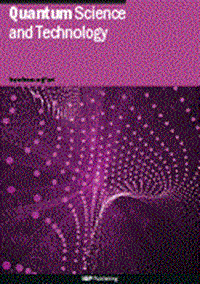Experimental realization of deterministic and selective photon addition in a bosonic mode assisted by an ancillary qubit
IF 5
2区 物理与天体物理
Q1 PHYSICS, MULTIDISCIPLINARY
引用次数: 0
Abstract
Bosonic quantum error correcting codes are primarily designed to protect against single-photon loss. To correct for this type of error, one can encode the logical qubit in code spaces with a definite photon parity, such as cat codes or binomial codes. Error correction requires a recovery operation that maps the error states—which have opposite parity—back onto the code space. Here, we realize a collection of photon-number-selective, simultaneous photon addition operations on a bosonic mode, a microwave cavity, assisted by a superconducting qubit. These operations are implemented as two-photon transitions that excite the cavity and the qubit at the same time. The additional degree of freedom of the qubit makes it possible to implement a coherent, unidirectional mapping between spaces of opposite photon parity. We present the successful experimental implementation of the drives and the phase control they enable on superpositions of Fock states. The presented technique, when supplemented with qubit reset, is suitable for autonomous quantum error correction in bosonic systems and, more generally, opens the possibility to realize a range of non-unitary transformations on a bosonic mode.辅助量子比特辅助下玻色子模式下确定性和选择性光子加法的实验实现
玻色子量子纠错码主要设计用于防止单光子损失。为了纠正这种类型的错误,可以在具有明确光子奇偶校验的代码空间中对逻辑量子位进行编码,例如cat码或二项式码。错误纠正需要将具有相反奇偶性的错误状态映射回代码空间的恢复操作。在这里,我们在超导量子比特的辅助下,在玻色子模式,微波腔中实现了一系列光子数选择,同时光子加法操作。这些操作以双光子跃迁的方式实现,同时激发空腔和量子位。量子比特的额外自由度使得在相反光子宇称空间之间实现相干的单向映射成为可能。我们介绍了驱动器的成功实验实现及其对Fock态叠加的相位控制。该技术在补充了量子比特重置后,适用于玻色子系统的自主量子纠错,更广泛地说,为在玻色子模式上实现一系列非幺正变换提供了可能性。
本文章由计算机程序翻译,如有差异,请以英文原文为准。
求助全文
约1分钟内获得全文
求助全文
来源期刊

Quantum Science and Technology
Materials Science-Materials Science (miscellaneous)
CiteScore
11.20
自引率
3.00%
发文量
133
期刊介绍:
Driven by advances in technology and experimental capability, the last decade has seen the emergence of quantum technology: a new praxis for controlling the quantum world. It is now possible to engineer complex, multi-component systems that merge the once distinct fields of quantum optics and condensed matter physics.
Quantum Science and Technology is a new multidisciplinary, electronic-only journal, devoted to publishing research of the highest quality and impact covering theoretical and experimental advances in the fundamental science and application of all quantum-enabled technologies.
 求助内容:
求助内容: 应助结果提醒方式:
应助结果提醒方式:


